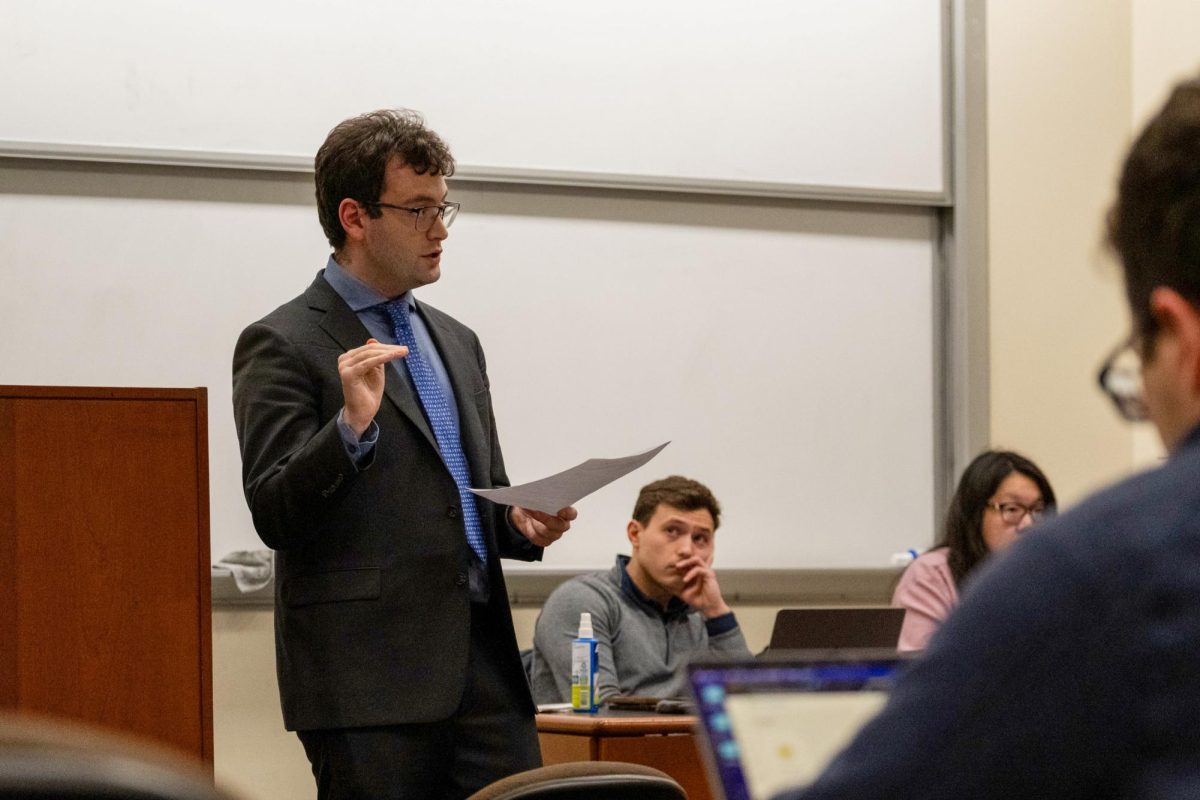Updated: May 31, 2019 at 9:44 p.m.
Neighborhood residents voiced concerns to officials over proposals to house students off-campus at a meeting Wednesday night.
Officials aim to loosen housing requirements to place undergraduates in two off-campus, University-owned commercial properties as renovations to Thurston Hall begin at the end of the 2019-20 academic year. But at the Foggy Bottom and West End Advisory Neighborhood Commission meeting, residents expressed concerns about the short renovation timeline and possible increases in noise.
Alicia Knight, the senior associate vice president for operations said University President Thomas LeBlanc prioritized the renovations as part of his mission to enhance the student experience. Officials paused plans in February to build a new residence hall so the University could expedite Thurston renovations.
“The prioritization of Thurston Hall did change dramatically in the last six months in terms of our focus and effort, and really our singular focus,” Knight said. “That’s the number one thing that Tom LeBlanc believes will enhance the student experience at GW.”
Officials will send four requests to the Zoning Commission that would allow GW to temporarily house 300 third and fourth-year students in One Washington Circle Hotel – located north of Washington Circle – and 250 third and fourth year students in the Aston, a graduate student apartment complex on New Hampshire Avenue.
Another request would allow second-year students to live in 1959 E St., which is currently limited to juniors, seniors, graduate and honors students.
Officials said they would restrict student access to the balconies and possibly the pool at One Washington Circle during the two years, but Circle Bistro, a restaurant located in the hotel, will remain open to everyone, including students.
All four proposals would be in effect from Fall 2020 through Spring 2022 to coincide with the renovation timeline for Thurston Hall.
Current regulations require officials to provide on-campus beds for 70 percent of Foggy Bottom students. Once GW reaches its 8,000-bed capacity, the University must provide one on-campus bed for each remaining undergraduate student, according to the University’s campus plan.
Knight said officials have held internal conversations about alternatives to the proposals if they fail to obtain zoning approvals, but the University is not actively pursuing other off-campus housing options.
“There are a couple of different things going on with respect to undergraduate enrollment and the need for housing that I think we’re going to see play out over the next couple of years,” she said.
Kevin Days, the director of community relations, said the Thurston renovations are well-planned, but the University will need to navigate “a lot of unknowns” and potential problems during construction.
“What I can commit to as your director of community relations is transparency, is an open line of communication, is honesty about what we’re thinking,” Days said.
Local residents pushed back on the proposals and requested additional information about the University’s plans.
Matt McCormick, a realtor in Foggy Bottom, said potential homebuyers and apartment renters may see the increased undergraduate population north of Washington Circle as a permanent change, which could deter them from moving to the neighborhood.
McCormick said he enjoys the University’s presence in the neighborhood but is concerned that the project may exceed two years and will require the University to further extend the zoning changes.
“I’ve got real heartburn on this because it will impact us,” he said.
This post was updated with the following correction:
The Hatchet incorrectly reported that Thurston renovations will begin this fall. Construction is expected to start at the end of the 2019-20 academic year. We regret this error.




